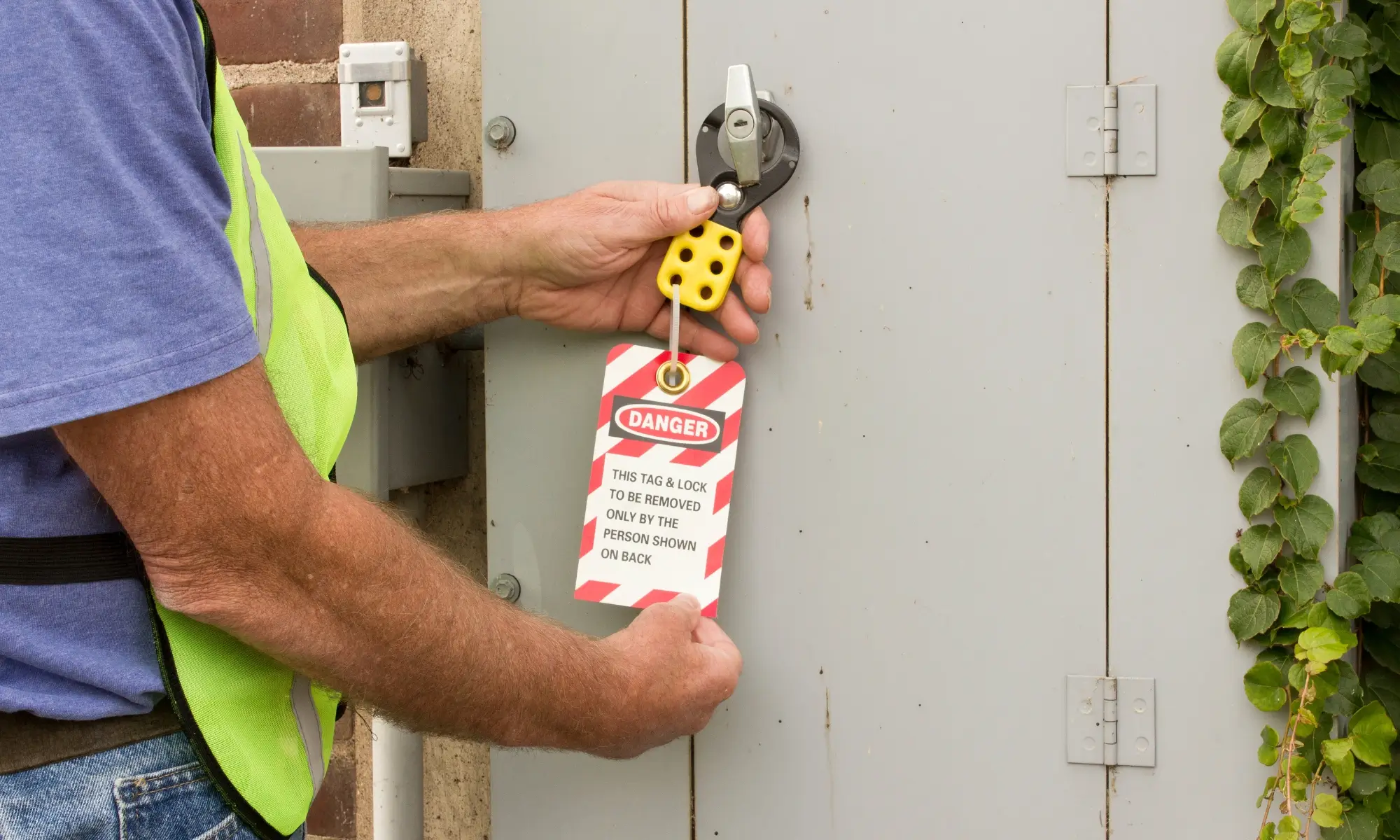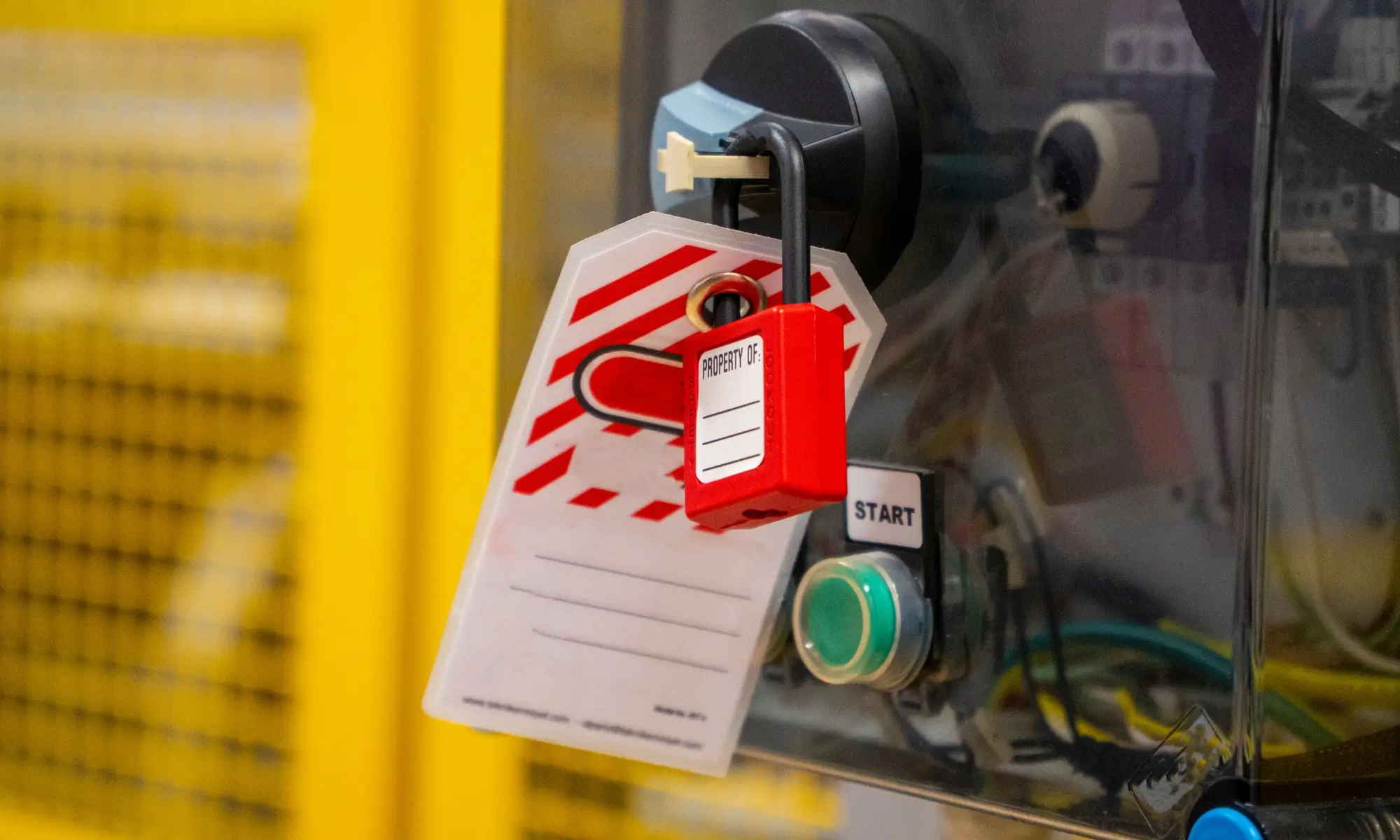Lockout/Tagout (LOTO) — also called energy control procedures — is a fundamental safety mechanism to protect workers from accidental energization or release of stored energy during servicing, maintenance, repair, or cleaning of machinery and equipment. When done properly, LOTO prevents serious injuries such as electrocution, crushing, amputation, burns, lacerations, and fractures.
Yet despite clear regulatory standards (e.g. OSHA’s 29 CFR 1910.147 in the U.S.), many worksite incidents still occur because of mistakes or shortcuts in LOTO.
Below are nine common mistakes that can turn a lockout/tagout procedure into a lethal hazard — and how to prevent each.

Common LOTO Mistakes That Lead to Injuries & Deaths
Lockout/Tagout (LOTO) represents a critical safety procedure employed in industrial environments to ensure the safe shutdown of hazardous machinery or equipment. This procedure prevents unintended restarts until maintenance or repair activities are fully completed. Non-compliance with established LOTO protocols can lead to severe injuries or fatalities.
The following are some common LOTO errors that contribute to such incidents:
1. Failing to Identify All Energy Sources
The mistake
Workers or planners sometimes assume only one energy source needs control (e.g. electrical), overlooking secondary or stored energy sources (hydraulic pressure, pneumatic pressure, springs, gravity, thermal, chemical, etc.).
In complex machinery, multiple energy inputs may exist, or energy can be transferred through ancillary systems (e.g. stored hydraulic fluid, residual pressure in piping, compressed air lines).
Danger/consequence
If any energy path is left uncontrolled, unexpected release or reactivation can harm personnel. For example:
- A stored pneumatic pressure in a line suddenly opens, moving a part or blowing off a cover.
- Hydraulic oil under pressure forces motion.
- A gravitational load (e.g. raised machine parts) drops.
- Thermal/chemical pressure builds in a closed system.
These residual or secondary energies can crush, cut, burn, or otherwise injure a maintenance worker.
Preventive best practice
- As part of procedure development, do a thorough energy audit on the equipment: list all energy sources and stored energy types.
- Use checklists to ensure nothing is omitted.
- Engage workers familiar with the equipment to validate the list.
- Review and update the list when equipment or processes change.
2. Incomplete or Generic Lockout Procedures
The mistake
Using a one-size-fits-all or generic procedure for multiple machines, or failing to document step-by-step, equipment-specific procedures.
Often, employers might provide a general LOTO manual but not tailor it to each machine’s idiosyncrasies (valves, switches, multiple power sources, interlocks, etc.).
Danger/consequence
When procedures omit the specific steps or fail to address unique hazards, operators may skip critical isolation steps. This increases the risk of incomplete lockout, leading to accidental energization or release. Regulatory violations are also likely.
Preventive best practice
- Develop machine-specific energy control procedures per equipment, not just general ones.
- Procedures should detail shutdown, isolation, application of LOTO devices, release of stored energy, verification, and re-energization steps.
- Make procedures readily accessible near the equipment.
- Review and validate these procedures periodically (or when the equipment is modified).
3. Insufficient Training or Poor Competency
The mistake
Assuming workers already “know” LOTO or providing minimal, superficial training. Or training once, then never refreshing or updating.
Sometimes training neglects hands-on practice, live-dead-live testing, or clarity on responsibilities.
Danger/consequence
Untrained or poorly trained personnel may:
- Fail to apply locks/tags correctly
- Remove devices prematurely
- Skip verification steps
- Misinterpret tags
- Fail to recognize hazards
These errors directly lead to energy being uncontrolled — with outcomes like shock, crushing, or fatal injury.
Preventive best practice
- Provide role-based training: authorized employees (who perform lockouts), affected employees, and other employees.
- Use practical, hands-on drills and include “live-dead-live” verification exercises.
- Refresh training periodically (e.g. annually) or when procedures change.
- Document training, assessments, and competency evaluations.
4. Skipping Verification That Energy Is Isolated (“Test Before Touch”)
The mistake
Assuming that because the switch is off or the lock is applied, the machine is safe. Skipping the step of verifying that no residual energy remains.
Sometimes operators neglect to attempt starting the machine (in a controlled test) to confirm it will not energize, or to check for residual voltage, pressure, or stored energy.
Danger/consequence
Without verification, hidden energy may remain:
- Capacitors still have voltage
- Hydraulic/pneumatic residual pressure
- Springs or counterweights
- Thermal or chemical energy
Initiating work under the false belief that the equipment is safe can cause sudden movement, shock, or rupture.
Preventive best practice
- Incorporate a verification step in every LOTO procedure — attempt to actuate or test the machine (in a safe way) to confirm zero energy.
- Use appropriate measurement tools (e.g. voltmeters, pressure gauges) to confirm no residual energy.
- Document the verification.
- Train operators explicitly on this step and never allow it to be skipped.
5. Neglecting Stored or Residual Energy (Failure to “Bleed,” “Discharge,” “Block”)
The mistake
Even after disconnecting primary energy sources, workers may neglect to release, block, or secure stored energy like pressure, springs, gravity loads, battery charges, or kinetic energy.
For example, leaving pressurized air in a line, or not retracting a spring-loaded mechanism.
Danger/consequence
Stored energy, when suddenly released, can:
- Propel moving parts
- Expel fluids or gases
- Drop elevated components
- Cause shock or arc flash
Many serious injuries occur from this oversight.
Preventive best practice
- Identify all sources of stored energy in the procedure development phase.
- Add steps to release, bleed, discharge, block, or mechanically lock stored energy.
- Ensure devices or blocks used are rated and dependable.
- Verify that stored energy is zero before beginning work.
- Don’t rely solely on switch-off — this is a distinct step.

6. Using Improper or Faulty Lockout/Tagout Devices
The mistake
Using makeshift devices (duct tape, wire, cable ties), shared locks, non-durable tags, or devices not suited for the environment (corrosive, outdoor, high temperature).
Also, using duplicate keys, shared master keys, or giving multiple people one key.
Danger/consequence
Weak, inappropriate, or shared devices can be bypassed or removed accidentally. A worker might remove a tag thinking they have permission, or a lock may corrode and fail, allowing reenergization. Shared locks eliminate individual accountability.
Preventive best practice
- Use purpose-built, durable LOTO devices that can withstand environmental conditions.
- Provide each authorized worker a personal lock and key (one person–one lock).
- Prohibit master or duplicate keys except under strictly controlled conditions.
- Color-code locks/tags and standardize devices.
- Conduct inspections of locks and tags for damage or wear.
7. Poor Communication (Including Shift Handovers & Contractor Integration)
The mistake
Failing to clearly communicate which machines are locked, who owns the lock/tag, or failing to inform incoming shifts or contractors. Also, ambiguous tags lacking information.
In many accidents, a worker thought the machine was safe because signage or communication was poor.
Danger/consequence
Without clear communication, another person may reenergize equipment (thinking lockout is done), or remove devices prematurely. Contractors unfamiliar with local LOTO schemes may inadvertently bypass or undo protections.
Preventive best practice
- Always use clear, legible, complete tags (name, date, reason, contact).
- Document the status of every lockout in a central log.
- At shift changes, perform a “handover” that includes active lockouts.
- Communicate to all affected employees (not just those doing maintenance).
- For contractors: ensure they are trained, informed of your LOTO procedures, and integrated into your permit or lockout system.
8. Not Conducting Periodic Audits / Inspections
The mistake
Assuming once LOTO procedures are in place, they will always be followed. Neglecting to audit, test, or evaluate compliance.
Over time, equipment changes, personnel turnover happens, and procedural drift can occur (shortcuts, omissions).
Danger/consequence
Faulty or outdated procedures, worn equipment, or non-compliance can go undetected until a serious incident occurs. Audits help catch gaps before tragedy.
Preventive best practice
- Conduct at least annual formal inspections of LOTO procedures and compliance.
- Use an independent qualified person (not the same one performing the LOTO) for inspection.
- Review each step, test sample lockouts, verify stored energy release, check documentation, and interview personnel.
- Update procedures and devices based on audit findings.
- Maintain audit records.
9. Improper Re-energization / Removing Locks Prematurely
The mistake
Removing locks, tags, or safety barriers before all people are clear or before confirming that the machine is safe to restart. Or failing to follow the proper sequence when restoring energy.
Sometimes workers skip verifying that tools, guards, and personnel are out of the danger zone before restart.
Danger/consequence
The machine may start while someone is still inside, leading to crushing, entanglement, laceration, or worse. Removing a lock prematurely is one of the more direct paths to fatal incidents.
Preventive best practice
- Only the person who applied the lock should remove it, unless predetermined, documented procedures allow otherwise under controlled conditions.
- Ensure all personnel are notified, and visual check confirms everyone is clear.
- Follow the written re-energization sequence step by step.
- Restore guards, covers, and safety interlocks before turning power back on.
- Document the completion of the re-energization process.
Conclusion
Even with correct procedures, human error, complacency, production pressure, or shortcuts can erode safety. Some additional overarching recommendations:
- Cultivate a safety-first culture, where workers feel empowered to refuse unsafe work.
- Ensure management commitment: resources, support, audits, and enforcement.
- Make LOTO compliance a key performance indicator.
- Integrate LOTO into the broader safety and maintenance management system (permit systems, change control, equipment lifecycle).
- When equipment is updated, retrofitted, or modified, always revalidate the LOTO procedures.
- Use technological aids where possible (key interlocks, lock boxes, automated energy isolators, etc.).
Lockout/Tagout is one of the most critical safeguards in industrial safety. The consequences of LOTO failure are not theoretical — workers die or lose limbs every year when shortcuts are taken.
If you want, I can prepare a checklist or template for safe LOTO implementation, customized to your industry or machinery. Do you prefer I produce that next?

